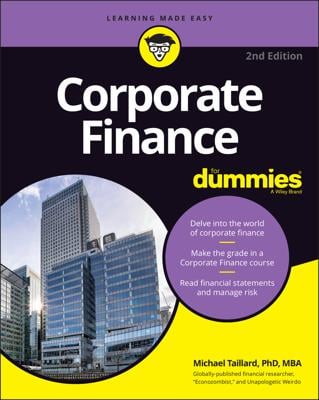In many situations, a business prepares a “mini” financial statement — called the statement of changes in owners’ equity — in addition to its three primary financial statements (income statement, balance sheet, and statement of cash flows).
You find this statement of changes in owners’ equity in almost all public companies, because most have relatively complex ownership structures and changes in their equity accounts during the year. Many smaller private companies, on the other hand, do not need to present this schedule.
Owners’ equity consists of two fundamentally different sources:
Capital invested in the business by the owners
Profit earned by and retained in the business
The specific accounts maintained by the business for its total owners’ equity depend on the legal organization of the business entity. One of the main types of legal organization of a business is the corporation, and its owners are stockholders. A corporation issues ownership shares called capital stock. The title statement of changes in stockholders’ equity is used for corporations.
Many publicly traded corporations have complex ownership structures consisting of two or more classes of capital stock shares; they usually buy some of their own capital stock shares; and they have one or more technical types of gains or losses during the year. So, they prepare a statement of changes in stockholders’ equity to collect together in one place all the changes affecting the owners’ equity accounts during the year.
This particular statement (that focuses narrowly on changes in owners’ equity accounts) is where you find certain gains and losses that increase or decrease owners’ equity but that are not reported in the income statement. This is a rather sneaky way of bypassing the income statement.
Basically, a business has the option to skirt around the income statement and, instead, report certain gains and losses in the statement of changes in owners’ equity. In this way, the gains or losses do not affect the bottom-line profit of the business reported in its income statement. You have to read this financial summary of the changes in the owners’ equity accounts to find out whether the business had any technical gains or losses, and the amounts of the gains or losses.
The general format of the statement of changes in stockholders’ equity includes:
A column for each class of stock (common stock, preferred stock, and so on)
A column for any treasury stock (shares of its own capital stock that the business has purchased and not cancelled)
A column for retained earnings
One or more columns for any other separate components of the business’s owners’ equity
Each column starts with the beginning balance and then shows the increases or decreases in the account during the year. For example, a comprehensive gain is shown as an increase in retained earnings, and a comprehensive loss as a decrease.
Reading a statement of changes in stockholders’ equity in a public company’s annual financial report can be heavy lifting. The professionals — stock analysts, money and investment managers, and so on — carefully read through and dissect this statement, or at least they should.
The average, nonprofessional investor should focus on whether the business had a major increase or decrease in the number of stock shares during the year, whether the business changed its ownership structure by creating or eliminating a class of stock, and what impact stock options awarded to managers of the business may have had.

